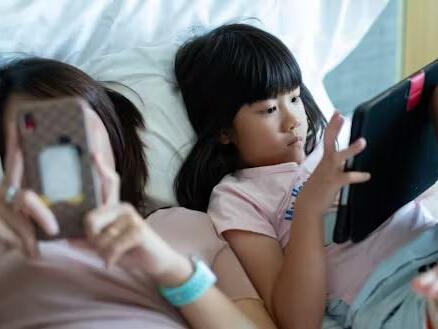Physical Address
304 North Cardinal St.
Dorchester Center, MA 02124
Physical Address
304 North Cardinal St.
Dorchester Center, MA 02124

It’s almost ten years since Netflix and Stan first started offering streaming services in Australia.
This decade has seen significant changes for the local screen industries, particularly affecting younger audiences. For today’s children, streaming and watching television “on-demand” have become the standard.
As we approach the second decade of streaming in Australia, we find ourselves at a critical juncture. Earlier this year, a parliamentary inquiry examined the commercial arrangements between US-based global streaming services like Netflix and YouTube and television manufacturers. This inquiry led to changes in how internet-connected smart TV devices are regulated.
These regulatory changes aim to ensure Australian providers such as ABC, SBS, and commercial networks are accessible and easy to locate on smart TV interfaces.
However, in other policy areas, government promises have yet to translate into action.
The government had previously committed to introducing a quota or expenditure system to ensure a certain amount of local content on subscription-video-on-demand (SVOD) services by July 2024. But July has come and gone with no developments, despite calls from the screen industry for urgent action. An upcoming summit and conference will explore the issue further.
While the Australian government acknowledges that the local children’s content sector requires targeted solutions, the only change thus far has been the removal of quotas for this content on commercial broadcasters. This policy shift led to a reduction of over 84% in hours of children’s content screened on commercial broadcasters from 2019 to 2022.
Currently, no broadcaster or streamer in Australia is required to screen a specified amount of local children’s content.
While there is significant concern about the reduction in local children’s content production, less attention has been paid to whether children can access the local content available on streaming platforms.
Our research with children aged seven to nine highlighted that content “discoverability” should be a pressing policy priority.
We interviewed 37 children and their parents and observed the children as they used streaming platforms to select and watch their preferred content. We also observed them watching with their parents to see how parental co-viewing might influence their choices.
Among our findings, we discovered:
The children in our study explained how primarily consuming US content affected them. One nine-year-old girl mentioned:
[I wish there was more Australian stuff] because sometimes I wouldn’t know what they’re talking about because they would say something a different way than how Australians would say it and then it would kind of get me confused and I would have to go on Google or something.
Consider also the following exchange with a different child:
Researcher: Do you wish there were more Australian shows on the streaming platforms?
Nine-year-old girl: Yeah because most of them are like, American, and when I was six or seven I would just watch all the American stuff. And then I started to say ‘diaper’ and then my Dad kept correcting me. […] They would say ‘gas station’ instead of ‘petrol station’ and stuff like that.
Children often struggled to identify Australian content on various streaming platforms unless the visuals included stereotypical Australian images like kangaroos or the outback.
Researcher: Do you like watching Australian TV shows?
Seven-year-old girl: I don’t even know what the Australian TV shows are.
Researcher: How would you know if something was Australian?
Seven-year-old girl: I don’t know.
The ABC’s platforms were the third most popular choice among the children and were often associated with Australian content, underscoring the ABC’s crucial cultural role in providing local content to children.
Researcher: And which streaming platform is the easiest to use?
Nine-year-old girl: Probably ABC ME. Because it’s mainly all Australian, and only a few of them aren’t – and you know that if you just scroll a little bit, you’re gonna find a good kids’ show.
Our young participants appreciated the interfaces and algorithmic personalisation of Netflix and YouTube but didn’t understand how these features might shape their content choices and habits (or limit their access to Australian content).
The children often assumed the content they watched on Netflix and YouTube was American. Even when their favorite shows were Australian, they sometimes still believed them to be American.
Eight-year-old boy: I watch a lot of American. […] I do like American shows a lot, but not really Australian shows.
Researcher: But what about Little Lunch and InBESTigators? [two shows the child had previously identified as favorites].
Eight-year-old boy: Little Lunch is definitely American.
Researcher: No, that one’s an Australian show!
Eight-year-old boy: [Physically recoils. Shocked pause] Well… InBESTigators is American!
Researcher: InBESTigators is Australian too!
Eight-year-old boy: [Shocked pause] WHAT!?
Our research indicates that the issues surrounding Australian kids’ TV go beyond production reductions. Children also need to be able to find the Australian content available on streaming platforms, which requires changes in how this content is labelled and displayed.
Australian content helps children understand and reflect on their place in local culture. If children don’t develop a taste for this content at a young age, they may never seek it out as they grow into teenagers and adults – potentially affecting our culture now and in the future.
Jessica Balanzategui receives funding from the Australian Children’s Television Foundation. This broader project is based at Swinburne University of Technology in collaboration with RMIT University.
Djoymi Baker receives funding from The Australian Children’s Television Foundation. The project Australian Children’s Television Cultures is based at Swinburne University of Technology in collaboration with RMIT University.
Georgia Clift receives funding from The Australian Children’s Television Foundation. The project Australian Children’s Television Cultures is based at Swinburne University of Technology in collaboration with RMIT University.
Source: Shutterstock
Source: Australian Children’s Television Foundation



